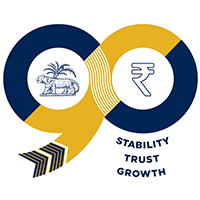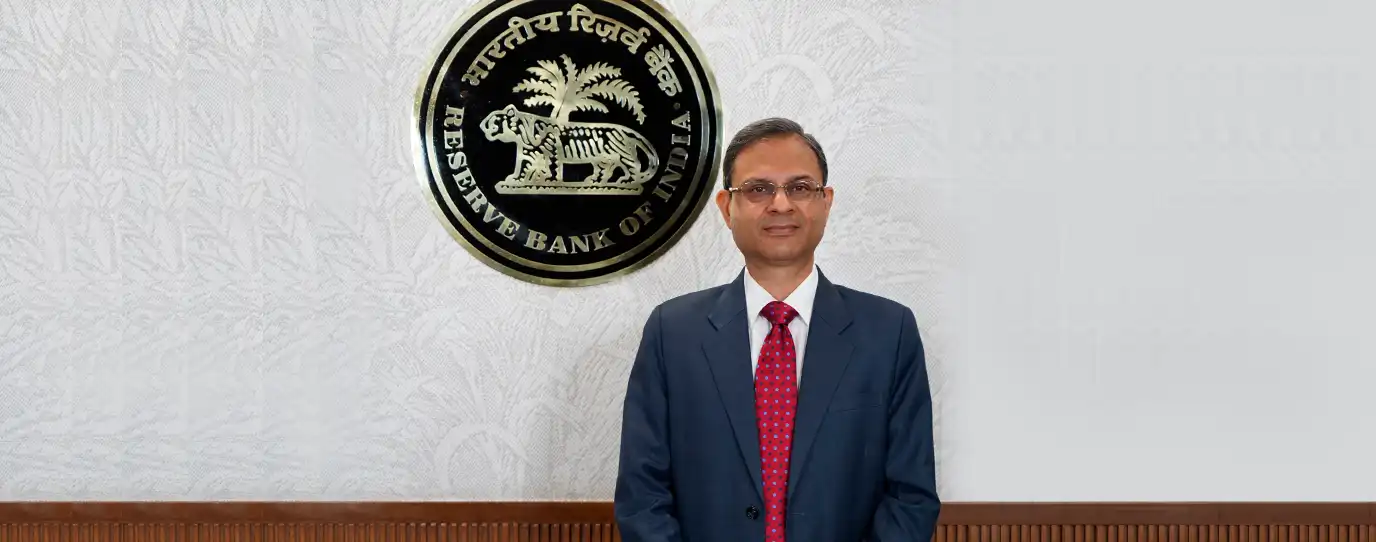Speeches - RBI - Reserve Bank of India
Speeches
This year’s Nobel Prize in physics celebrated the role of artificial intelligence (AI) in revolutionising the way we work and live. It is widely believed that AI and robotics will usher in a new wave of secular innovation, much like past breakthroughs in steam power and personal computers. Silently, new technologies are offering a way out of the cross currents of diverging macroeconomic and policy pathways, geopolitical tensions, geoeconomic fragmentation and climate change in which the global economy is transfixed. Accordingly, these technologies are heralding a brighter future, arguably holding the key for many emerging and developing economies to escape the middle-income trap. It is estimated that generative AI itself could increase global GDP by $7-10 trillion over the next three years. Large language models are estimated to increase the productivity levels of workers by 8 to 36 per cent.
This year’s Nobel Prize in physics celebrated the role of artificial intelligence (AI) in revolutionising the way we work and live. It is widely believed that AI and robotics will usher in a new wave of secular innovation, much like past breakthroughs in steam power and personal computers. Silently, new technologies are offering a way out of the cross currents of diverging macroeconomic and policy pathways, geopolitical tensions, geoeconomic fragmentation and climate change in which the global economy is transfixed. Accordingly, these technologies are heralding a brighter future, arguably holding the key for many emerging and developing economies to escape the middle-income trap. It is estimated that generative AI itself could increase global GDP by $7-10 trillion over the next three years. Large language models are estimated to increase the productivity levels of workers by 8 to 36 per cent.
Good morning to you all! In the Indian tradition, Namaskar, which means I salute the divinity in you. It is always fulfilling to be here at the Annual Central Banking Seminar of the Federal Reserve Bank of New York. Over the years the seminar has become a landmark forum for the intermingling and cross-fertilisation of ideas and experiences among central bankers from all over the world. It is no wonder, therefore, that it has come to be regarded as a favoured stamping ground where practitioners of the profession rub shoulders and learn from each other about the ‘soiling of the hands’ in topically relevant issues in central banking.
Good morning to you all! In the Indian tradition, Namaskar, which means I salute the divinity in you. It is always fulfilling to be here at the Annual Central Banking Seminar of the Federal Reserve Bank of New York. Over the years the seminar has become a landmark forum for the intermingling and cross-fertilisation of ideas and experiences among central bankers from all over the world. It is no wonder, therefore, that it has come to be regarded as a favoured stamping ground where practitioners of the profession rub shoulders and learn from each other about the ‘soiling of the hands’ in topically relevant issues in central banking.
The Context Over the past three and a half decades since the formal adoption of inflation targeting (IT), it has proliferated across continents, regardless of the position of host jurisdictions in the developmental ladder. By the turn of this century, it has been increasingly embraced by emerging market economies (EMEs) so much so that they now outnumber advanced economies (AEs) as practitioners. A unique feature of IT is its operationalisation even before the development of a formal theory2. The journey of IT has been tumultuous, navigating as it has the Great Moderation and ‘once in a century’ shocks such as the global financial crisis (GFC), the COVID-19 pandemic, and persisting geopolitical conflicts that have had a direct bearing on both inflation’s evolution and on financial conditions. Yet, there is no evidence of any major country abandoning it3. On the other hand, central banks have drawn lessons from these humungous challenges and innovated and refined their policy frameworks. The endogenous evolution of IT has rendered it the longest surviving monetary policy framework in modern times.
The Context Over the past three and a half decades since the formal adoption of inflation targeting (IT), it has proliferated across continents, regardless of the position of host jurisdictions in the developmental ladder. By the turn of this century, it has been increasingly embraced by emerging market economies (EMEs) so much so that they now outnumber advanced economies (AEs) as practitioners. A unique feature of IT is its operationalisation even before the development of a formal theory2. The journey of IT has been tumultuous, navigating as it has the Great Moderation and ‘once in a century’ shocks such as the global financial crisis (GFC), the COVID-19 pandemic, and persisting geopolitical conflicts that have had a direct bearing on both inflation’s evolution and on financial conditions. Yet, there is no evidence of any major country abandoning it3. On the other hand, central banks have drawn lessons from these humungous challenges and innovated and refined their policy frameworks. The endogenous evolution of IT has rendered it the longest surviving monetary policy framework in modern times.
Namaskar! Good morning, I am honoured to be here today. This initiative by the CII – the Summit on Financing 3.0 – is perhaps the first of its kind and assumes timely significance in positioning itself as a beacon of light illuminating India’s leap towards its future. At the outset, therefore, I would like to express my deep appreciation of CII’s role in shaping India’s industrial and business landscape since 1895 as arguably the most visible business association in the country today. It is only befitting that I pay tribute to the CII’s extraordinary contributions by dwelling on our ambitions as a nation and the role of finance in actualising them.
Namaskar! Good morning, I am honoured to be here today. This initiative by the CII – the Summit on Financing 3.0 – is perhaps the first of its kind and assumes timely significance in positioning itself as a beacon of light illuminating India’s leap towards its future. At the outset, therefore, I would like to express my deep appreciation of CII’s role in shaping India’s industrial and business landscape since 1895 as arguably the most visible business association in the country today. It is only befitting that I pay tribute to the CII’s extraordinary contributions by dwelling on our ambitions as a nation and the role of finance in actualising them.
I am very happy to participate in the 5th edition of the Global Fintech Fest (GFF). I would like to congratulate the organisers – NPCI, PCI and FCC1 – for bringing together diverse stakeholders from the FinTech ecosystem including FinTech innovators and companies, banks, NBFCs, regulators and others for this year’s GFF. This event has grown into a much awaited fixture in the calendar of not just the Fintech industry but also the broader technology ecosystem.
I am very happy to participate in the 5th edition of the Global Fintech Fest (GFF). I would like to congratulate the organisers – NPCI, PCI and FCC1 – for bringing together diverse stakeholders from the FinTech ecosystem including FinTech innovators and companies, banks, NBFCs, regulators and others for this year’s GFF. This event has grown into a much awaited fixture in the calendar of not just the Fintech industry but also the broader technology ecosystem.
Mr. Alejandro Lopez, President, International Association of Deposit Insurance (IADI), Dr. Eva Hupkes, Secretary General, IADI, Mr. M. Rajeshwar Rao, Deputy Governor, Reserve Bank of India (RBI), distinguished representatives of the IADI and the Asia Pacific Regional Committee (APRC) Secretariat, chief executive officers (CEOs) and officials of deposit insurance agencies, delegates from central banks, eminent speakers and panellists, invitees representing banks in India, and my colleagues from the Deposit Insurance and Credit Guarantee Corporation (DICGC) and the Reserve Bank of India (RBI), good morning to you all.
Mr. Alejandro Lopez, President, International Association of Deposit Insurance (IADI), Dr. Eva Hupkes, Secretary General, IADI, Mr. M. Rajeshwar Rao, Deputy Governor, Reserve Bank of India (RBI), distinguished representatives of the IADI and the Asia Pacific Regional Committee (APRC) Secretariat, chief executive officers (CEOs) and officials of deposit insurance agencies, delegates from central banks, eminent speakers and panellists, invitees representing banks in India, and my colleagues from the Deposit Insurance and Credit Guarantee Corporation (DICGC) and the Reserve Bank of India (RBI), good morning to you all.
Namaskar! Good afternoon I am honoured to be invited to the Lal Bahadur Shastri National Academy of Administration (LBSNAA), a temple of independent India with a rich and hallowed history that predates independence. I thank Madam Sowjanya for her gentle perseverance and deft management of logistics that made it possible for me to be here. I understand that this is the 18<sup>th</sup> round of phase IV of the Academy’s mid-career training programme. Participants here have already put in 15 to 18 years in the service of the nation and are, therefore, primed
Namaskar! Good afternoon I am honoured to be invited to the Lal Bahadur Shastri National Academy of Administration (LBSNAA), a temple of independent India with a rich and hallowed history that predates independence. I thank Madam Sowjanya for her gentle perseverance and deft management of logistics that made it possible for me to be here. I understand that this is the 18<sup>th</sup> round of phase IV of the Academy’s mid-career training programme. Participants here have already put in 15 to 18 years in the service of the nation and are, therefore, primed
I am deeply honoured to participate in the 79th meeting of the Executive Council (EXCO) of the International Association of Deposit Insurers (IADI). At the outset, I would like to express my profound appreciation for the IADI as a global standard-setter as well as an international forum for the cross-fertilisation of information and country experiences on practices and techniques relating to deposit insurance. The IADI is contributing significantly to building effective deposit insurance systems across the world, thereby strengthening public confidence in the banking system and ensuring financial stability.
I am deeply honoured to participate in the 79th meeting of the Executive Council (EXCO) of the International Association of Deposit Insurers (IADI). At the outset, I would like to express my profound appreciation for the IADI as a global standard-setter as well as an international forum for the cross-fertilisation of information and country experiences on practices and techniques relating to deposit insurance. The IADI is contributing significantly to building effective deposit insurance systems across the world, thereby strengthening public confidence in the banking system and ensuring financial stability.
I am honoured to be invited to Nomura’s 40th Central Bankers Seminar. The discussions here assume topical relevance in the context of the tectonic shifts underway in the global economy that present new challenges for the conduct of central banking. Besides divergent growth pathways and the varying speeds and magnitudes of disinflation, regime shifts impart their own layers of uncertainty.
I am honoured to be invited to Nomura’s 40th Central Bankers Seminar. The discussions here assume topical relevance in the context of the tectonic shifts underway in the global economy that present new challenges for the conduct of central banking. Besides divergent growth pathways and the varying speeds and magnitudes of disinflation, regime shifts impart their own layers of uncertainty.
Honourable Governors, Deputy Governors, Managing Directors, delegations from SEACEN central banks, distinguished experts, and panellists, Dr. Mangal Goswami and the SEACEN team, and my colleagues from the Reserve Bank of India.
Honourable Governors, Deputy Governors, Managing Directors, delegations from SEACEN central banks, distinguished experts, and panellists, Dr. Mangal Goswami and the SEACEN team, and my colleagues from the Reserve Bank of India.
Page Last Updated on: May 08, 2025



















